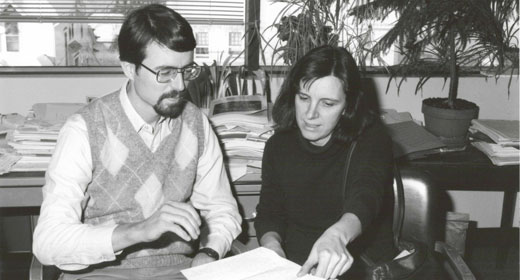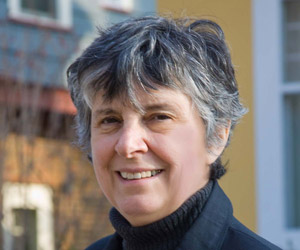
Women’s employment and earnings have changed dramatically since Mary Corcoran, professor of public policy, political science, and women’s studies, began to explore the issue some four decades ago. When Corcoran wrote her dissertation at MIT in 1975, men and women had vastly different experiences in the job market. But women went on to make tremendous gains in the ensuing decades.
Compared to the 1970s, not only are more women working, they are working more hours, their earnings are closer to those of men, and they are working in a broader range of occupations, says Corcoran.
Women’s increasing human capital—education and work experience—has played an important role in those job market gains, she explains.
In the past, the average working woman was less educated than the average working man, so statistically adjusting for women’s educational disadvantage once reduced estimates of the wage gap. Since the 1990s, however, women have been earning undergraduate and graduate degrees at a higher rate than men. So statistically adjusting for women’s educational advantage today reveals a larger wage gap.
Another important form of human capital is work experience. In 1978, Corcoran was the first to compile age-representative data showing wage differences by work experience and gender. Back then, she says, controlling for differences in experience explained a large portion of the wage gap, but that’s much less true today, as increasing numbers of women have entered, and stayed in, the labor market.
Still, the median woman working full-time, all year now makes 79 percent of what the median man makes. And the situation is even worse for mothers and women of color. So while there’s been significant progress since Corcoran began her career—when the wage gap was estimated at 58 percent—continuing to narrow the gender pay gap remains a stubborn challenge.

Where Corcoran has spent much of her career finding ways to illuminate and raise awareness about the gender wage gap, a new Ford School faculty member—Betsey Stevenson—has built her research career examining the impact that public policies have had on women’s employment, including their decision to work or stay at home, the careers they choose, and how these decisions interact with their family life. She has also been actively engaged in national policy conversations on women’s employment.
Shortly after joining the University of Michigan as an associate professor of public policy and economics, Stevenson was tapped to become a member of the White House Council of Economic Advisers and spent the next two years advising President Obama on issues related to gender equality.
Equal pay legislation has been on the books for decades, says Stevenson, but enforcement continues to be a challenge.
Some dismiss the extent of the problem by dickering over the credibility of the numbers themselves. Seventy-nine percent is the median for full-time, full-year workers, so of course the numbers vary significantly when you adjust for various factors, including the decisions that men and women make.
Some attribute the gap to women’s choices, saying women choose to enter professions—like social work or teaching—that pay less. Interestingly, the pay gap is especially wide in some of the highest paid professions like medicine, finance, marketing, and management.
And some argue that women choose to take more time off for child care, and value workplace flexibility over higher wages.

In a study of the career trajectories of lawyers, for example, Corcoran and colleagues Paul Courant and Mary Noonan (MPP ’97, PhD ‘01) found that starting salaries for women lawyers were similar to those of their male colleagues. But 15 years after law school, female lawyers were earning 63 percent of what their male counterparts were earning. An important part of the difference, says Corcoran, was associated with taking time off from work or reducing work hours to care for children, which led to large monetary penalties.
Corcoran notes that overall, however, “fewer women are taking time off for child care, and on average, they’re taking less time off when they do.”
Whatever the reason for the gap in pay between men and women, policy can be a powerful way to diminish it.
Stevenson has argued for paid family leave policies, which would make it easier for working mothers to stay engaged with the labor market. She has also argued for family-friendly workplace policies that would help working parents balance job and family demands. And, more recently, she has spoken in favor of increased transparency around pay data, which would make it easier for employees to negotiate for equal pay.
This March, Stevenson was asked to testify before a hearing of the U.S. Equal Employment Opportunity Commission (EEOC) about a proposed change to Title VII of the Civil Rights Act that would require larger employers to submit pay data.
Stevenson argued that reporting this data would help employers identify troubling pay practices and take action to ensure that they are compensating employees fairly. She also argued that it would help the EEOC more efficiently target investigations, benefiting both taxpayers and employers.
In her testimony, Stevenson emphasized that an important source of discrimination comes from implicit bias—bias that is unintentional. Since awareness is an important tool to combat implicit bias, even reporting broad categories of data disaggregated by race, ethnicity, and sex, such as the EEOC is requesting, would help identify pay discrimination and would encourage employers to promote equal pay, as well.
Duncan Photo: Bentley Historical Library, University of Michigan
Below is a formatted version of this article from State & Hill, the magazine of the Ford School. View the entire Spring 2016 State & Hill here.